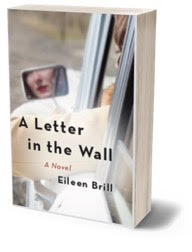A Letter in the Wall initially began as a screenplay, but later turned into a biography. However, while Brill did find some information on Joan and her family, she wasn’t able to gather enough details to create the biography. She then changed the book into a novel, with Joan as a woman who wanted more in life than just marriage and motherhood. “This was someone who was trying to, along the way, challenge the status quo and push back a bit and was not getting the support she wanted… I attempted to make her multi-layered and and complex because I wanted her life and her personality and her decisions to be open to interpretation… She, sort of, in the end, I do think she changed and evolved…So I wanted to create a character that, she kind of pushed your buttons, and you had to, if not like her, possibly empathize or understand her, if you know where she’s coming from and what some of her struggles were.”

I don’t think that most people are all good or all bad. We’re all kinds of shades of gray, and we have our secrets and we have our foibles, and sometimes we make bad decisions and hopefully we learn from them. So I wanted to create a character that you kind of had to…if not like her, possibly empathize or understand her, if you know where she’s coming from and what some of her struggles were.


A letter is never ill-timed; it never interrupts. Instead it waits for us to find the opportune minute, the quiet moment to savor the message.

Podcast: Play in new window | Download
Subscribe: RSS

Want to join the discussion?
Feel free to contribute!